Tom Clancy - Locked On
Здесь есть возможность читать онлайн «Tom Clancy - Locked On» весь текст электронной книги совершенно бесплатно (целиком полную версию без сокращений). В некоторых случаях можно слушать аудио, скачать через торрент в формате fb2 и присутствует краткое содержание. Год выпуска: 2011, ISBN: 2011, Жанр: Триллер, на английском языке. Описание произведения, (предисловие) а так же отзывы посетителей доступны на портале библиотеки ЛибКат.
- Название:Locked On
- Автор:
- Жанр:
- Год:2011
- ISBN:9781101566466
- Рейтинг книги:3 / 5. Голосов: 1
-
Избранное:Добавить в избранное
- Отзывы:
-
Ваша оценка:
- 60
- 1
- 2
- 3
- 4
- 5
Locked On: краткое содержание, описание и аннотация
Предлагаем к чтению аннотацию, описание, краткое содержание или предисловие (зависит от того, что написал сам автор книги «Locked On»). Если вы не нашли необходимую информацию о книге — напишите в комментариях, мы постараемся отыскать её.
Locked On — читать онлайн бесплатно полную книгу (весь текст) целиком
Ниже представлен текст книги, разбитый по страницам. Система сохранения места последней прочитанной страницы, позволяет с удобством читать онлайн бесплатно книгу «Locked On», без необходимости каждый раз заново искать на чём Вы остановились. Поставьте закладку, и сможете в любой момент перейти на страницу, на которой закончили чтение.
Интервал:
Закладка:
Tony Wills had been working with Ryan; more than once he had looked at Melanie Kraft’s research and commented, “Your girlfriend is smarter than you are, Ryan.”
Jack thought Wills was half right. She was smarter than he was, true, but he wasn’t sure she was his girlfriend.
The Pakistanis did an admirable job hiding the loss of the two nuclear devices from their own public and from the world’s press for forty-eight hours. During this time they scrambled to find the culprits and locate the bombs, but the Pakistani Federal Investigation Agency came up empty. There was an immediate fear that it had been an inside job, and there was a related fear that the ISI was involved. But the ISI and the PDF were infinitely more powerful than the FIA, so these fears were not effectively explored as part of the investigation.
But when the news finally got out that there had been a massive terrorist act within Pakistan on a rail line, the Pakistani press put together, through their sources in the government, that nuclear devices had been on board the train. When it was confirmed, within hours, that the two devices, type and yield unspecified, had been hijacked by parties unknown, it came with a very public and very specific promise from the highest corridors of power in the military, civilian government, and the Pakistan Atomic Energy Commission that the theft of the weapons was of no great consequence. It was explained that the devices were equipped with fail-safe arming codes that one would need to render the devices active.
All the parties who said this publicly firmly believed what they were saying, and it was true, although one of the parties did leave out a critical morsel of information that was highly relevant.
The director of the Pakistan Atomic Energy Commission did not tell his peers in the government and military, and he did not tell the public at large, that two of his top weaponization physicists, two men able to bypass the arming codes and reconfigure the detonation systems, had gone missing at the exact moment the bombs were lost.
The next morning the two crates claiming to be property of Textile Manufacturing, Ltd, sat on a dusty concrete floor in the center of a warehouse at a school bus fleet maintenance yard on Kurban Rakhimov, in the northern part of Dushanbe. General Rehan and Georgi Safronov both were very happy with the choice of facility for this portion of the mission. The property was massive and fenced and gated on all sides, blocking the view from the tree-lined streets of the more than fifty foreign men working and patrolling the grounds inside. Dozens of trucks and school busses sat in various states of operational condition, which made the Dagestani and Pakistani trucks invisible, even from the air. And the large maintenance building was large enough for several busses, which made it more than large enough for the huge bombs. Further, there was a large array of hoists and rolling stands to lift and move the massive school bus engines that were scattered around the facility.
Of the people present, the only ones doing anything more than standing around were the two scientists who worked for PAEC, Pakistan’s Atomic Energy Commission. They were missing back in Pakistan, and the few people who knew about their disappearance but did not know the men themselves suspected they had been kidnapped by a terrorist force. But those who knew them and knew of the missing nukes did not think for a moment that anyone was forcing them to do anything. That they were Islamic radicals was widely known among their peers. On this matter some had been accepting, and some had been uncomfortable yet quiet.
Both of these groups of people suspected these men were involved.
The two scientists, Dr. Nishtar and Dr. Noon, were united in their belief that Pakistan’s nuclear weapons were not the property of the civilian government, nor were they fabricated and stockpiled, at great cost and at great risk they would hasten to add, only to be used as some sort of hypothetical deterrent. An invisible chess piece.
No. Pakistan’s nuclear weapons belonged to the Ummah, the community of Muslims, and they could and should be used for the good of all believers.
And the two scientists believed in Riaz Rehan, and they trusted that now was the right time because he said that now was the right time.
The dour foreign men from the Caucasus all around them in the school bus maintenance facility were of the faithful, even if they were not Pakistani Muslims. Drs. Noon and Nishtar did not understand all of what was going on, but they were quite clear on their mission. They were to arm the weapons, they were to oversee the loading of the weapons into the rocket payload containers, and then they were to return to Pakistan with the ISI general, where they would remain in hiding until Rehan told them it was safe to come out in public and take their bow as heroes of the state.
Noon and Nishtar had been working for more than three hours in the cold warehouse, taking moments to warm their hands over a coal brick stove that had been lit in the corner so that their fingers would remain pliant for the intricate work of removing the nuclear devices from their MK84 bomb casings, necessary for them to fit in the payload containers. A group of Rehan’s personal security force stood by, ready to help with engine hoists and rolling racks. Safronov offered up Jamaat Shariat men for this work but Rehan refused, told him to keep his gunmen inside the perimeter gates but ready for any threat from the outside. Once the bombs left Dushanbe, Rehan explained, they would be Safronov’s, but for now Rehan retained possession and his people would handle them.
As Noon and Nishtar checked some data on a laptop on a table next to the first payload container, Rehan and Safronov stepped up behind them. The general reached out and put his thick hands on the two men’s backs. They continued to work. “Doctors, how is your progress?”
Dr. Nishtar answered while he peered into the container, looking at the configuration of the warhead. “Minutes more for this one, and then we begin on the second weapon. We have bypassed the launch code mechanisms, and we have installed the radio altimeter fuses.”
“Show us.”
Noon pointed out a device bolted to the side of the bomb. It looked like a metal briefcase, and it contained several mechanical parts wired together, as well as a computer keypad and an LED readout. He said, “There is a radio altimeter that is already set. When the devices reach an altitude of sixty thousand feet it will arm the weapon, and when it descends to one thousand feet it will detonate. There is a backup barometer on the detonator, as well as a manual override for a timed detonation, which you will not need for a warhead launch. Also, we will rig a tamper trigger on the door of the payload container, so that if anyone tries to open it to remove the weapon, the nuclear bomb will detonate.”
Georgi smiled and nodded, appreciative of the men’s work on behalf of the Dagestani cause. “And you will do the same for the other device?”
“Of course.”
“Excellent,” Rehan said as his hands patted the men on their shoulders. “Carry on.”
Safronov left the warehouse minutes later, but Rehan lagged behind. He returned to the two nuclear scientists and said, “I have one small request for you both.”
“Anything, General,” said Dr. Noon.
Ninety minutes later, General Rehan embraced Georgi Safronov outside the maintenance garage, and he shook the hand of each one of the Dagestani fighters. He called them brave brothers, and he promised them that if they should be martyred he would name streets in his country in their honor.
Then Rehan, Khan, the PAEC officials, and Rehan’s protection detail departed through the front gates of the bus farm in four vehicles, removing with them every trace of their work, and leaving behind the Dagestani fighters and the two Dnepr-1 payload containers.
Читать дальшеИнтервал:
Закладка:
Похожие книги на «Locked On»
Представляем Вашему вниманию похожие книги на «Locked On» списком для выбора. Мы отобрали схожую по названию и смыслу литературу в надежде предоставить читателям больше вариантов отыскать новые, интересные, ещё непрочитанные произведения.
Обсуждение, отзывы о книге «Locked On» и просто собственные мнения читателей. Оставьте ваши комментарии, напишите, что Вы думаете о произведении, его смысле или главных героях. Укажите что конкретно понравилось, а что нет, и почему Вы так считаете.
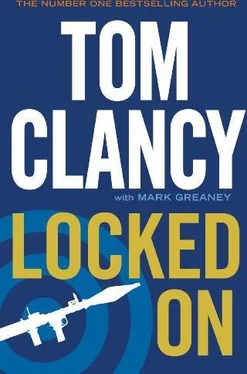
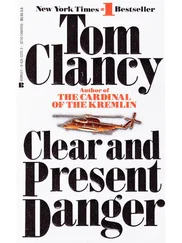

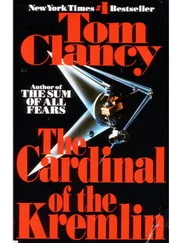
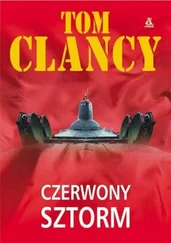
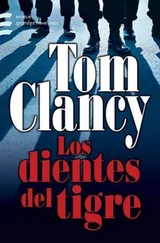
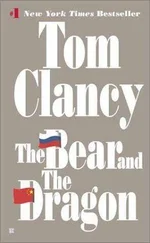
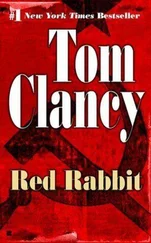


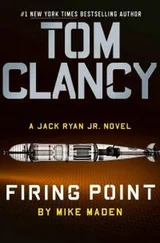
![Александр Ирвин - Tom Clancy’s The Division 2. Фальшивый рассвет [litres]](/books/417744/aleksandr-irvin-tom-clancy-s-the-division-2-falsh-thumb.webp)